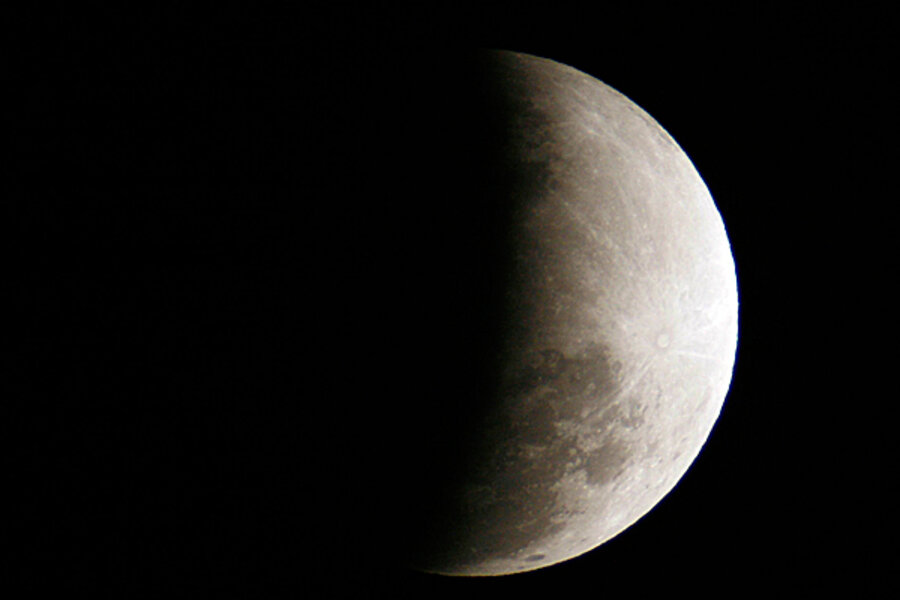Lunar eclipse: The truth behind eclipses
Loading...
The word "eclipse" means much more than the vampire and werewolf thriller set to hit theaters on Wednesday. But "The Twilight Saga: Eclipse," the latest film based on the popular vampire book series, is being released between two of nature's real-life eclipses – a recent partial lunar eclipse and a solar eclipse coming on July 11.
The study of eclipses has been a part of astronomy since its inception, since they are some of nature's most dramatic celestial shows.
The first lunar eclipse of 2010 occurred on Saturday, June 26, and was visible across parts of the Americas, the Pacific Ocean and eastern Asia. However, it was only a partial eclipse of the moon as it passed through part of Earth's shadow.
On July 11, the second solar eclipse of 2010 will occur, creating a total eclipse along a narrow corridor of the Earth's southern hemisphere.
Solar eclipses occur when the Earth, moon and sun are aligned on the same plane, and the moon comes between the Earth and the sun. [Solar eclipse photos.]
A lunar eclipse, on the other hand, occurs when the moon slips behind the Earth, which blocks the sun's rays from striking the moon. With a lunar eclipse, the moon, Earth and sun are again aligned (or closely so), with the Earth in the middle.
Mechanics of the moon, sun and Earth
The type and length of an eclipse depend upon the moon's location relative to its orbital nodes, which are the points where the moon crosses the sun's apparent path in the sky, explained NASA solar astronomer Mitzi Adams of the Marshall Space Flight Center in Huntsville, Ala. A lunar eclipse typically lasts for a few hours, unlike a total solar eclipse, which usually lasts for only a few minutes, she added.
The longest total solar eclipse lasted about seven minutes, Adams said in a recent NASA webchat.
However, the first solar eclipse of 2010 – the Jan. 15 annular solar eclipse – did last longer, but was not total. That annular solar eclipse, in which the moon covers only a large portion of the sun, lasted over eight minutes over some parts of Asia.
Looking at a solar eclipse through a telescope, however, can be dangerous, Adams said.
"You have to have a proper filter," she added. "The safest way is through a method called projection, where you actually take the eyepiece out and project the image onto a sheet of paper behind the telescope, without looking at the sun. You move the sheet of paper back and forth until you get a focused image."
While skywatchers can expect the next solar eclipse on July 11, the next lunar eclipse won't occur until Dec. 21. That lunar eclipse should be visible across the U.S., and, while lunar eclipses can be viewed with a telescope, Adams says that it is not necessary.
"Looking at a lunar eclipse with a telescope is safe, but you don't really need a telescope – your eyes are better instruments in this case," Adams said. "One could walk into the back yard to see it, assuming there are no clouds. No telescope is required. Lunar eclipses are best viewed with the unaided eye. However, while the eclipse is going on, you could use a telescope to look at the craters and mountains on the moon."
Adams said that while a lunar eclipse should be easily visible anywhere in the night sky, the ideal location would be dark and away from city lights.
And all this can be seen without the hassle of ticket lines, overpriced popcorn, or any price of admission. All you have to do is know when to look up.





